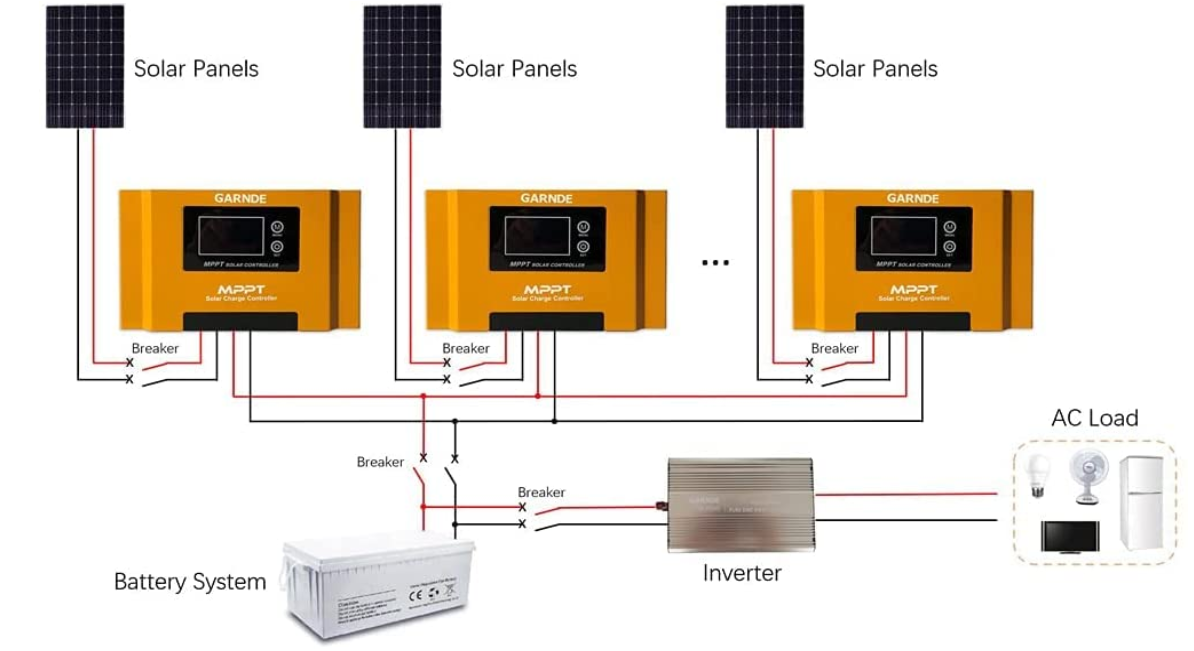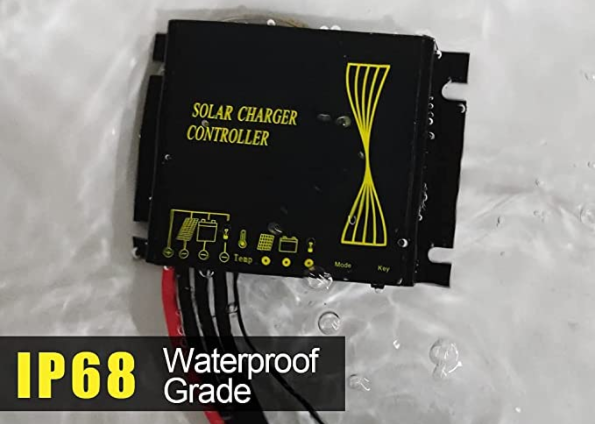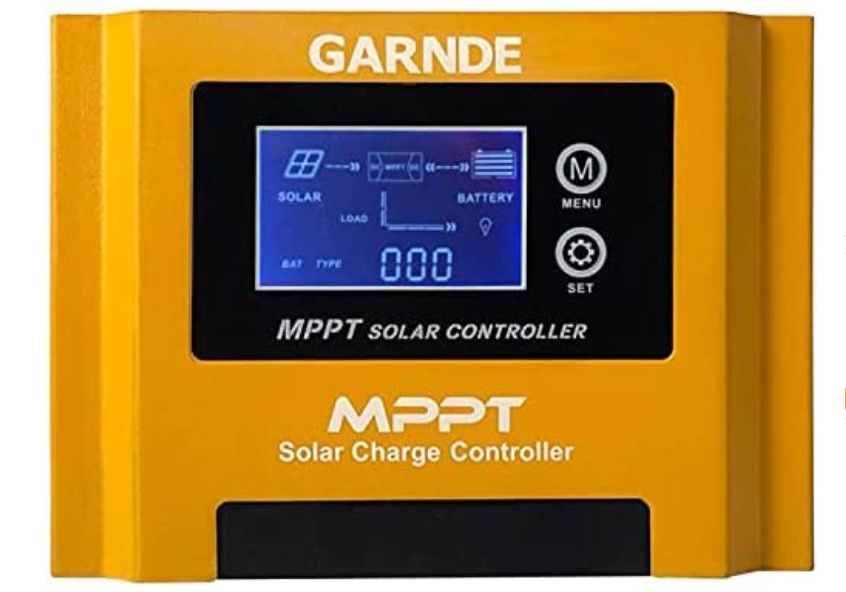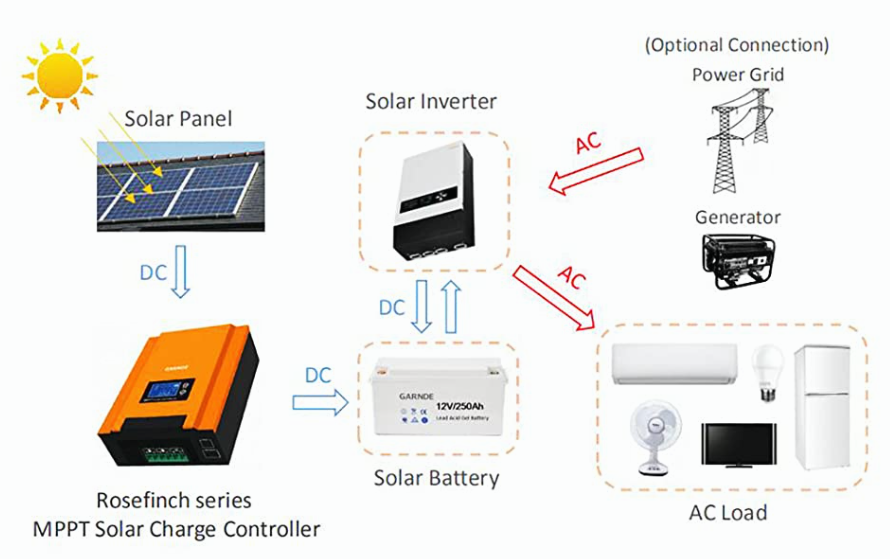The Difference Between PWM & MPPT Solar Charge Controller
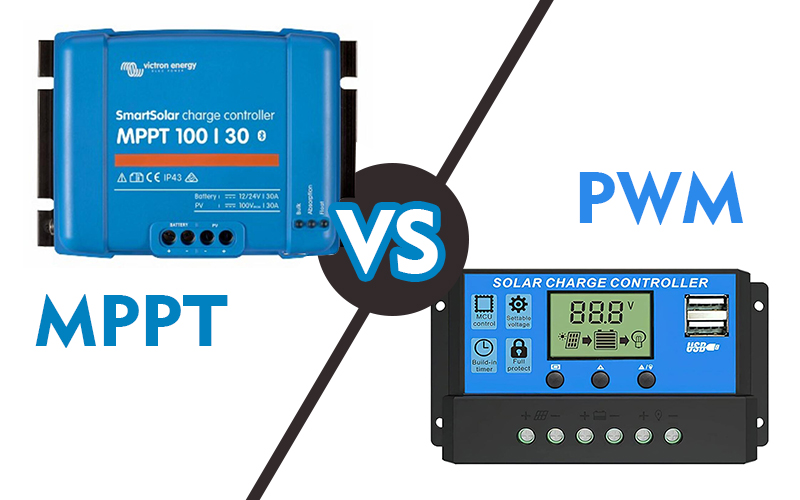
What is the solar charge controller?
A solar charge controller also commonly called the solar charge regulator, is a solar-powered voltage and current regulator.
It is a key component of a solar power system which are used in off-grid and hybrid off-grid applications to regulate power input from PV arrays to deliver optimal power output to run electrical loads and charge batteries.
Why do you need a charge controller?
As we all know, Overcharging batteries will at the least significantly reduce battery life and at worst damage the batteries to the point that they are unusable. So use the solar charge controller is to regulate the power going from the solar panels to the batteries is very important.
PWM vs MPPT: How to choose the best charge controller for my system?
Solar charge controllers are divided into two as PWM (Pulse Width Modulation) and MPPT (Maximum Power Point Tracking).
The two technologies about PWM and MPPT charge control devices are different, each with its own advantages.
The decision depends on site conditions, system components, size of array and load, and finally the cost for a particular solar power system.
After comparing the two types of devices, we get:
The crux of the difference
With a PWM controller, the current is drawn out of the panel at just above the battery voltage, whereas
With an MPPT solar charge controller, the current is drawn out of the panel at the panel “maximum power voltage” (think of an MPPT controller as being a “smart DC-DC converter”)
The differences in operation
PWM:
GARNDE PWM Solar Charge Controller IP68 Waterproof
A PWM (pulse width modulation) controller can be thought of as an (electronic) switch between the solar panels and the battery:
The switch is ON when the charger mode is in bulk charge mode
The switch is “flicked” ON and OFF as needed (pulse width modulated) to hold the battery voltage at the absorption voltage
The switch is OFF at the end of absorption while the battery voltage drops to the float voltage
The switch is once again “flicked” ON and OFF as needed (pulse width modulated) to hold the battery voltage at the float voltage
Note that when the switch is OFF the panel voltage will be at the open-circuit voltage (Voc) and when the switch is ON the panel voltage will be at the battery voltage + voltage drops between the panel and the controller.
MPPT:
Temperature Conditions
An MPPT controller is better suited for colder conditions. As the solar module operating temperature goes down, the Vmp1 increases. That’s because the voltage of the solar panels operating at their peak power point at Standard Testing Conditions (STC is 25C°) is about 17V while the battery voltage is about 13.5V. The MPPT controller is able to capture the excess module voltage to charge the batteries. As a result, an MPPT controller in cool conditions can produce up to 20 – 25% more charging than a PWM controller.
In comparison, a PWM controller is unable to capture excess voltage because the pulse width modulation technology charges at the same voltage as the battery. However, when solar panels are deployed in warm or hot climates, their Vmp decreases, and the peak power point operates at a voltage that is closer to the voltage of a 12V battery. There is no excess voltage to be transferred to the battery making the MPPT controller unnecessary and negating the advantage of an MPPT over a PWM.
In a scenario where the solar array is large relative to the power drawn from the batteries by the load, the batteries will stay close to a full state of charge. A PWM controller is capable of efficiently maintaining the system without the added expense of an MPPT controller.
Size of the System
Low power systems are better suited to a PWM controller because:
A PWM controller operates at a relatively constant harvesting efficiency regardless of the size of the array
A PWM controller is less expensive than a MPPT, so is a more economical choice for a small system
A MPPT controller is much less efficient in low power applications. Systems 170W or higher tickle the MPPT’s sweet spot.
Type of Solar Module
Stand-alone off-grid solar modules are typically 36-cell modules and are compatible with both PWM and MPPT technologies. Some grid-tie solar modules on the market today are not the traditional 36-cells modules that are used for off-grid power systems. For example, the voltage from a 60-cell 250W panel is too high for 12-Volt battery charging, and too low for 24-Volt battery charging. MPPT technology tracks the maximum power point (thus MPPT) of these less expensive grid-tie modules in order to charge the batteries, whereas PWM does not.
Cost
MPPT controllers are typically more expensive than PWM’s but are more efficient under certain conditions, so they can produce more power with the same number of solar modules than a PWM controller. One must then analyze the site to verify that the MPPT can indeed perform more efficiently when used in that system’s given set of conditions.
In summary:
Choosing the right solar controller/regulator
The PWM is a good low-cost option:
• for smaller systems
• where the efficiency of the system is not critical, e.g. trickle charging.
• for solar panels with a maximum power voltage (Vmp) of up to 18V for charging a 12V battery (36V for 24V battery, etc.).
The MPPT controller is best:
• For larger systems where the additional 20%* or more energy harvesting is worthwhile
• When the solar array voltage is substantially higher than the battery voltage e.g. using house panels, for charging 12V batteries
An MPPT controller will yield higher returns compared with a PWM controller as the panel voltage increases. I.e. a 160W eArche panel using 36 conventional monocrystalline cells with a maximum power amp of 8.4A will provide around 8.6A at 12V; while the 180W panel having 4 more cells will provide the same amperage but 4 additional cells increases the panel voltage by 2V. A PWM controller will not harvest any additional energy, but an MPPT controller will harvest an additional 11.1% (4/36) from the 180W panel.

